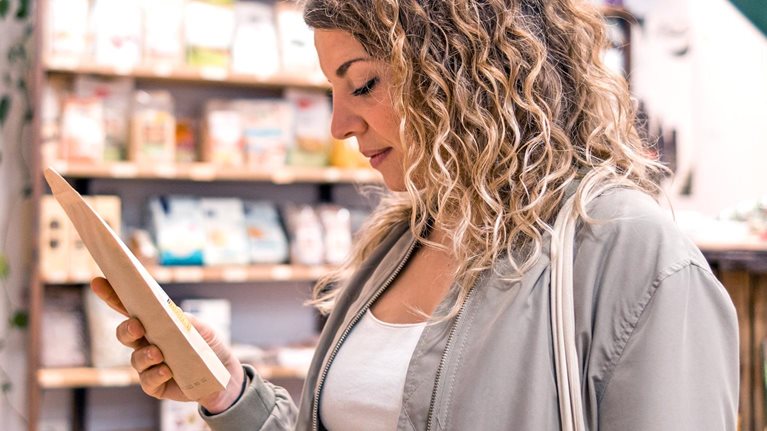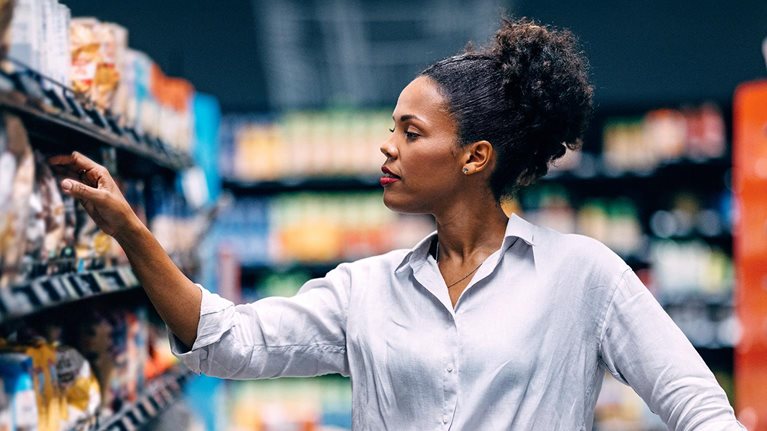The years since 2020 have been a time of upheaval for consumers and companies alike, and packaging players are no exception. A global pandemic shifted consumption patterns,1 many countries went through a period of high inflation,2 and geopolitical uncertainty continues to reshape trade flows3—sometimes profoundly. How have these factors affected the choices consumers make and especially their attitudes and sentiments toward packaging?
To answer this question, in the first quarter of 2025 we launched another round of our comprehensive survey exploring consumers’ attitudes toward packaging. We have been conducting this research globally with tens of thousands of consumers since 2020, and this survey round encompasses more than 11,000 respondents from 11 countries4 that together represent four continents, 66 percent of global GDP, and 50 percent of the world’s population.5
This survey addresses consumer preferences across product categories, packaging substrates, and sales channels, and it offers granular insights by demographic group (such as income level, geography, gender, and age) within each country, though analysis in this article is mostly presented at the country level. In addition, this survey round included a number of questions that were also used in 2020 and 2023, which allows us to look at trends over time.6
Five key findings emerge: Two relate to the factors most important to consumers overall when making purchases and when considering packaging, and the remaining three provide detail on consumer attitudes toward sustainability. First—and consistent with previous survey rounds—price and quality remain the most important product characteristics that influence consumers’ purchasing decisions, with price even more important when compared with previous years. Environmental concerns rank significantly lower across product categories, though some European countries (including France and Italy) place higher importance on environmental impact.
Second, food safety and shelf life have remained the most important packaging characteristics that influence consumers’ purchasing decisions, and the importance of environmental impact has once again ranked at a much lower level. Notably, however, consumers globally do not care less about the environment today than they did in the past; the absolute proportion of the survey sample who deem it important has stayed fairly flat. Rather, consumers have started to care more about a number of other factors, including value for money.
Third, recyclability is viewed as the most critical sustainability trait globally, with limited consensus on the next most important factor, though all facets of circularity ranked well. Fourth, our survey indicates that consumers around the world are not fully aligned in their views on which packaging materials are the most sustainable. Glass and paper rank high across all geographies, but important differences exist between countries, such as for polyethylene terephthalate (PET) bottles, which are viewed as sustainable in geographies with robust collection systems such as deposit return schemes. Fifth, despite ranking environmental factors relatively lower than in prior surveys, the majority of respondents claim to be willing to pay more for sustainable packaging.
Overall, there is a significant—and fairly consistent—portion of global consumers for whom environmental factors are very important, but consumers’ attitudes and understanding of sustainable packaging are complex. While there are important nuances by geography, two factors are consistent across the countries surveyed. First, younger consumers (Gen Zers and millennials) and higher-income consumers generally reported the most willingness to pay more for sustainable packaging. Second, consumers generally see packaging producers and brand owners—rather than themselves, retailers, or regulators—as responsible for driving sustainability in packaging. As such, packaging producers and brand owners will need to carefully consider how to respond to evolving consumer demand. This will require a granular understanding of the sentiment and segmentation of the consumer landscape. This article concludes with three critical questions that companies in the packaging value chain need to answer to start building an actionable fact base on which they can build their future sustainability strategy.
From the eye of the consumer: A five-year overview of packaging sustainability
Before the COVID-19 pandemic, McKinsey research showed that sustainability was a top concern across the whole packaging value chain.7 Many consumers were becoming increasingly aware of the packaging sector’s environmental footprint,8 and growing public awareness sparked responses from legislators in many parts of the world to address the issue.9 With sustainability policies and actions increasingly seen as core to a company’s value proposition, fast-moving consumer goods and retail companies made bold commitments to recycling efforts and use of recycled content.
However, during the early stages of the pandemic, hygiene concerns led many companies and governments in a number of jurisdictions to pause or slow their efforts to eradicate single-use packaging.10 This evolution was reflected in our 2020 survey round, which indicated that the pandemic had heightened food safety concerns, especially in the hardest-hit countries.11 This trend remained evident in our 2023 survey results, in which hygiene and shelf life were ranked as the factors most important in consumers’ purchasing decisions across all countries surveyed.12
Against this backdrop—and in light of destocking efforts,13 continuing consumer concerns about rising prices and inflation,14 and geopolitical uncertainty,15 what are consumer views about packaging, and particularly packaging sustainability, in 2025?
Current global consumer sentiments about sustainability in packaging
Price and quality remain the most important product characteristics that influence consumers’ purchasing decisions globally (Exhibit 1). This reported price sensitivity is likely driven at least in part by ongoing concerns following recent experiences of inflation, though there are signs that the relationship between consumer sentiment and spending has weakened.16 However, price is ranked as less important—and brand as more important—in India and China.

Environmental impact ranks considerably lower than other product characteristics in importance across product categories, but it is still a key consideration for a significant and relatively stable subset of consumers. Thirty-nine percent of respondents globally ranked environmental impact as extremely or very important, which was similar to 38 percent in 2023 and up from 20 percent in 2020.
In addition, the importance of environmental factors does vary by product category and geography. Environmental impact is viewed as more important for fresh fruit and vegetables and household cleaning products, and European consumers generally view sustainability considerations as more important than other geographies do—though relative importance has declined since 2023.
Shifting to product packaging in particular, food safety and shelf life are ranked as the most important packaging characteristics influencing consumers’ purchasing decisions—as was the case in 2020 and 2023—with environmental impact ranking lower in importance. Since 2023, the relative importance of environmental impact has either stagnated or has trended downward relative to other characteristics across regions (Exhibit 2).

In absolute terms, however, the share of respondents ranking environmental impact as extremely or very important has remained steady over time, at 51 percent in 2025, 52 percent in 2023, and 51 percent in 2020. Therefore, the key shift over time has not been that consumers care less, on average, about sustainability, but rather that they are focusing more on other packaging characteristics.
What a consumer wants and their willingness to pay for it
Over the past few years, McKinsey has published dozens of articles related to packaging sustainability. A consistent message across these articles has been that no single packaging substrate—be that glass, metal, paper, or plastic—is the undisputed leader across every attribute of packaging sustainability. All substrates have advantages and disadvantages in terms of their suitability for individual applications, their performance across different sustainability dimensions, and how they are perceived across countries and regions.17
Still, we often get asked what packaging substrate is seen by consumers as the most sustainable. We have asked this question multiple times as part of this survey, with the same broad result each time: Consumers around the world are not fully aligned in their views on the most sustainable packaging materials (Exhibit 3). Glass and paper both rank in the top three for every country in our sample, but there are other important discrepancies by country. For example, PET bottles are ranked as the second most sustainable packaging type in Sweden and Japan, while liquid cartons are ranked highly in Brazil.

A number of factors, such as country-specific recycling patterns and consumer experience with these programs, could underpin these differences. Respondents in the countries with the highest PET collection rates—Germany, Sweden, and Japan have collection rates of more than 80 percent, for example—all ranked PET in the top three, while the countries with the lowest collection rates (such as the United States, with a rate of 33 percent) rank PET the lowest.18
This raises an important consideration: What particular aspect of packaging sustainability do consumers deem the most important? The top choice was consistent globally, with consumers in every country considering recyclability as the most important factor when considering sustainable packaging (Exhibit 4). More broadly, all traits associated with circularity—that is, whether the packaging is recyclable, made of recycled content, and reusable—performed strongly, ranking in the top four for every country except India. Consumers in nine out of the 11 surveyed countries also ranked whether packaging was bio-based as the least important factor. These commonalities may reflect a relatively consistent level of familiarity with these concepts across countries; most consumers have a clear understanding of the benefits of recycling but may have less information about bio-based technologies.

For other sustainability traits, there was much less global consensus. Compostability shows significant variation, for example, ranking highly in China, India, Italy, and the United States, but near the bottom in all other geographies surveyed. Carbon dioxide impact was ranked as the second most important factor in Japan but only the sixth most important in the United States.
Our 2025 results reveal that all geographies have a group willing to pay more for sustainable packaging, with a smaller subset willing to pay substantially more (Exhibit 5). This finding is consistent with previous survey rounds and in line with a recent McKinsey study conducted with NielsenIQ. The study found that products making sustainability-related claims averaged 28 percent cumulative growth over the five years before the study, versus 20 percent for products that made no such claims.19

There is significant variation in willingness to pay by geography but also by demographic and socioeconomic group. As a general rule, younger consumers (Gen Zers and millennials) and higher-income consumers have the highest-stated willingness to pay more for sustainable packaging.20 For example, the 2025 survey found that 8 percent of Germans say they are willing to pay a lot more for sustainability packaging, but breaking this down by generation and income, this is true of just 1 percent of high-income Gen Xers, compared with 25 percent of high-income millennials and 9 percent of low-income millennials.
These differences in willingness to pay have important implications for companies bringing innovative sustainable packaging to market at higher price points. Companies marketing their product toward high-income millennials in Germany, for example, could have an addressable market that is many times higher than if they were targeting high-income Gen X consumers in Germany. As a result, identifying the segments and consumer groups that are willing to pay more will be critical for success.
Clearly, a significant subset of consumers is willing to reward brands and products that can meet their context-specific criteria for sustainable packaging. But who do they expect to drive this change? When asked, consumers view brand owners and packaging producers as the most responsible for driving sustainability in packaging, placing significantly less responsibility on themselves, retailers, or regulators (Exhibit 6). Of all the findings laid out in this article, this may be the most consistent across countries.

Three critical questions to consider
As a whole, the results of this year’s survey and comparisons to earlier years make it clear that global consumer sentiments toward sustainability in packaging are complex. Some features of consumer preferences—such as food safety and shelf life as the most important characteristics of packaging—have remained relatively consistent over the past five years. Other survey results, such as willingness to pay and preferred packaging type, have continued to vary, both across countries and across time. These shifting preferences should not be surprising because they are, to some extent, a reaction to the current volatile macroeconomic environment, as well as a result of changing regulations and recycling practices within individual countries or communities.
While environmental concerns continue to rank lower than several other factors for global consumers, a significant portion of consumers rank environmental impact as very important in their purchasing decisions, and there are segments of consumers across all countries who say they are willing to pay some premium for sustainable packaging. To take advantage of this opportunity and capture market share by getting ahead of developing trends and future regulatory shifts, packaging players need to understand how consumer sentiments develop as well as consumer preferences toward sustainability at a more granular level.
To kick-start their efforts, however, packaging players should proactively review their portfolio with three key questions in mind:
- How can they accelerate time to market for sustainable solutions and carefully target and tailor their product and marketing approach toward the most relevant demographic segments within appropriate focus markets?
- How can they increase competitiveness on the total cost of ownership of new sustainable packaging innovations? This could include thinking about how to decrease the full set of packaging costs—especially raw material and input costs, which are the main cost driver—as well as how to help reduce downstream costs for customers (such as through product alterations that allow faster filling speed), decrease changeover costs, or improve barrier performance (such as by decreasing food waste).
- How can the organization find the right partners—across the full value chain—to streamline and optimize its sustainability efforts?
The answers to these three questions will form the basis of an actionable fact base, which packaging suppliers should use to update and enhance their sustainability strategy road map.
Although sustainability concerns continue to be ranked as less important than other factors, they continue to be a critical industry-shaping trend for the packaging value chain. Both consumer preferences and the level of consumer understanding of sustainability packaging vary substantially by geography and demographic group. Consumer sentiments and the regulatory backdrop are also evolving quickly, but this varies by country as well. As a result, packaging producers looking to stay ahead of the game will need to take a data-driven, granular, and proactive approach to their future sustainability strategy.


